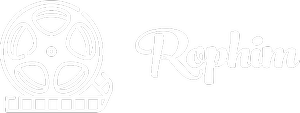Movie genres are essential in shaping how we experience cinema. From the early days of film to today’s high-tech blockbusters, the evolution of movie genres reflects changes in technology, culture, and audience preferences. Understanding this transformation gives us insight into how cinema has continuously reinvented itself while still retaining its roots. In this article, we explore the fascinating history of movie genres and how they’ve evolved from their classic forms into the exciting genres we enjoy today.
1. The Birth of Film Genres: Silent Films and Early Cinema
In the early days of cinema, films were primarily silent, and genres were still in their infancy. Filmmakers relied on visual storytelling, with exaggerated facial expressions and body language to convey emotions and plot. Silent films like “The Birth of a Nation” (1915) and “Nosferatu” (1922) laid the groundwork for the development of genres such as drama, horror, and romance. The focus was on broad visual cues and themes, and the storylines were often simple but powerful, as filmmakers experimented with cinematic techniques to keep the audience engaged.
2. The Golden Age of Hollywood: Rise of Classic Genres
The 1930s to the 1950s marked the Golden Age of Hollywood, a time when genres became more defined. The invention of sound in the late 1920s, with films like “The Jazz Singer” (1927), changed the landscape of cinema forever. This era saw the rise of iconic genres like musicals, film noir, westerns, and adventure films.
- Musicals like “Singin’ in the Rain” (1952) were a vibrant and essential part of Hollywood’s output, showcasing colorful dance sequences and unforgettable songs.
- Film noir, characterized by its dark, moody atmospheres and morally ambiguous characters, gave rise to classics like “Double Indemnity” (1944) and “The Maltese Falcon” (1941).
- Westerns, epitomized by stars like John Wayne, told stories of frontier life, embodying the rugged spirit of the American West.
- Adventures, such as “The Adventures of Robin Hood” (1938), provided an escape with tales of heroism and exotic locales.
3. New Hollywood and Genre Blending (1960s-1970s)
The 1960s and 1970s saw the emergence of the New Hollywood movement, with filmmakers like Martin Scorsese, Stanley Kubrick, and Francis Ford Coppola pushing boundaries in storytelling and style. The rise of independent cinema and the desire to appeal to a more mature audience led to the blending of genres, creating films that defied traditional classification.
Genres like thrillers, psychological dramas, and science fiction grew in prominence. “A Clockwork Orange” (1971) blended dystopian sci-fi with dark satire, while “The Godfather” (1972) brought together crime drama and family saga. Films like “Star Wars” (1977) revolutionized the sci-fi genre, fusing it with action-adventure elements, giving birth to one of the most beloved genres of all time: the blockbuster.
4. The Rise of Blockbusters and Superhero Films (1980s-2000s)
The 1980s marked the era of the blockbuster, with high-budget films becoming a dominant force in Hollywood. The advent of special effects and CGI made it possible to create visually stunning, action-packed films. “E.T. the Extra-Terrestrial” (1982), “Indiana Jones” (1981), and “Back to the Future” (1985) defined the action-adventure genre and captured the public’s imagination.
In the late 1990s and 2000s, superhero films became a new genre that dominated the box office. Marvel and DC Comics characters, including Spider-Man, Iron Man, and Batman, transitioned from comic books to cinematic icons. These films blended action with fantasy, humor, and drama, creating an immersive experience that appealed to audiences of all ages.
5. Modern-Day Cinema: Genre Evolution and Hybridization
Today’s movie landscape is defined by hybrid genres, where the boundaries between different categories of film have blurred. Films now often combine elements from multiple genres to create unique and fresh experiences. Action-comedy, horror-thriller, and sci-fi-romance are just a few examples of how genres evolve and overlap to meet the tastes of contemporary audiences.
For example, “The Dark Knight” (2008) is a crime drama and superhero film that incorporates themes of psychological thrillers and noir. Likewise, “Get Out” (2017) combined elements of social commentary, horror, and thriller to create a film that both entertained and provoked thought.
The influence of streaming platforms like Netflix and Amazon Prime has also led to more niche genres emerging and finding an audience. Audiences now have access to a diverse range of genres, from true-crime documentaries to dark comedies and international thrillers, all catering to specific tastes and preferences.
6. The Future of Movie Genres: What’s Next?
As technology continues to advance and global audiences become more diverse, movie genres will undoubtedly continue to evolve. The rise of virtual reality (VR) and interactive films may lead to new genre experiences that allow viewers to control aspects of the story. Additionally, the increasing globalization of cinema means that genres will likely be influenced by a wide range of cultural elements, giving rise to hybrid genres that reflect a more interconnected world.
Conclusion: The Ever-Changing World of Movie Genres
The evolution of movie genres reflects not only changes in filmmaking technology but also shifts in culture, social values, and audience expectations. What started as simple, single-genre films has evolved into a world of hybrid genres and complex narratives. As filmmakers continue to push the boundaries of storytelling, audiences can expect even more genre-defying films in the years to come. The beauty of cinema lies in its ability to reinvent itself, and with each new wave of innovation, we are bound to witness even more exciting developments in movie genres.


